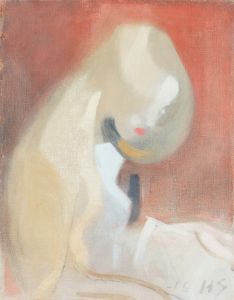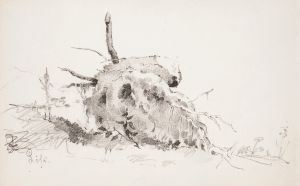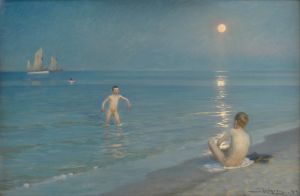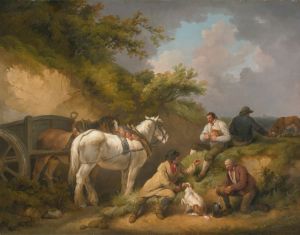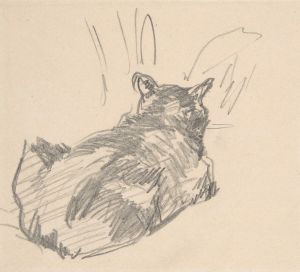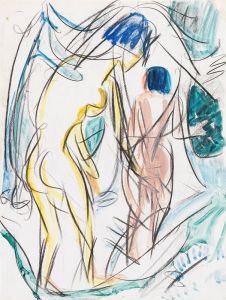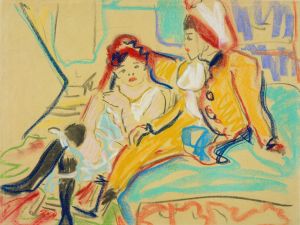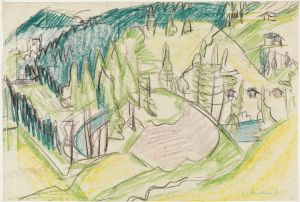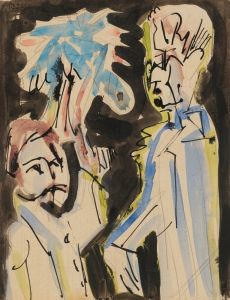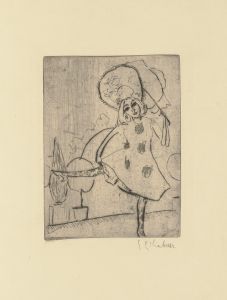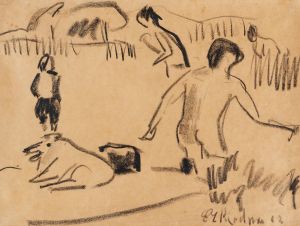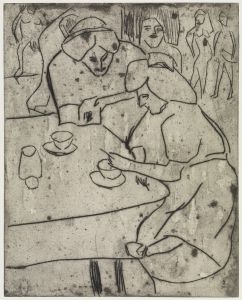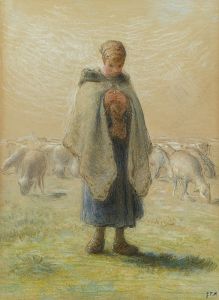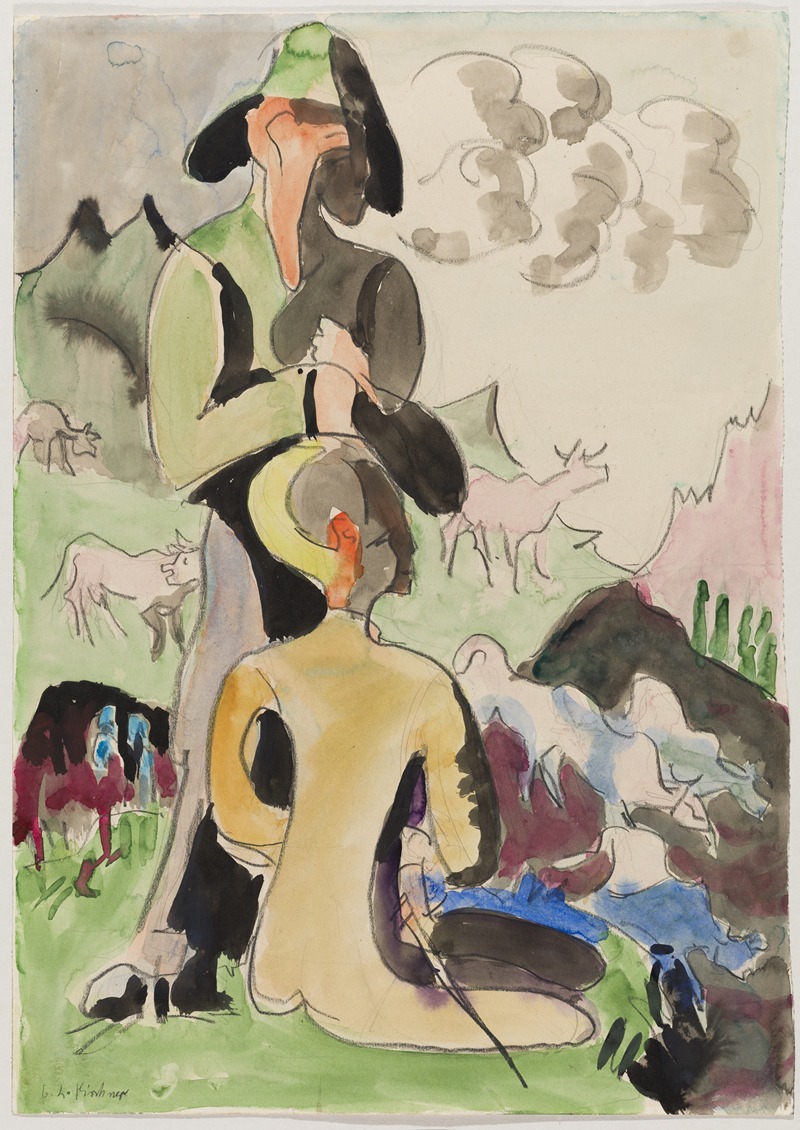
Hirtenknaben
A hand-painted replica of Ernst Ludwig Kirchner’s masterpiece Hirtenknaben, meticulously crafted by professional artists to capture the true essence of the original. Each piece is created with museum-quality canvas and rare mineral pigments, carefully painted by experienced artists with delicate brushstrokes and rich, layered colors to perfectly recreate the texture of the original artwork. Unlike machine-printed reproductions, this hand-painted version brings the painting to life, infused with the artist’s emotions and skill in every stroke. Whether for personal collection or home decoration, it instantly elevates the artistic atmosphere of any space.
Ernst Ludwig Kirchner was a prominent German expressionist painter and one of the founding members of the artist group Die Brücke (The Bridge). His work is known for its bold colors, dynamic compositions, and emotional intensity. One of his notable paintings is "Hirtenknaben" (Shepherd Boys), created in 1913.
"Hirtenknaben" reflects Kirchner's fascination with rural life and his desire to capture the essence of nature and human interaction within it. The painting depicts two young shepherd boys in a pastoral setting, surrounded by lush greenery and a serene landscape. The boys are shown in a moment of rest, with one reclining on the ground and the other sitting beside him, both appearing relaxed and at ease in their natural environment.
Kirchner's use of color in "Hirtenknaben" is particularly striking. He employs a vivid palette, with bright greens, blues, and earthy tones that bring the scene to life. The brushwork is expressive and dynamic, characteristic of Kirchner's style, which often sought to convey the emotional and psychological states of his subjects rather than a realistic representation.
The composition of "Hirtenknaben" is carefully balanced, with the figures of the boys positioned in the foreground, drawing the viewer's attention. The background features a sweeping landscape that provides a sense of depth and context to the scene. Kirchner's attention to detail in the depiction of the natural surroundings, such as the texture of the grass and the play of light and shadow, enhances the overall impact of the painting.
Kirchner's work during this period was heavily influenced by his experiences and the cultural milieu of early 20th-century Germany. The artist was deeply affected by the rapid industrialization and urbanization of society, which he often contrasted with the simplicity and purity of rural life. "Hirtenknaben" can be seen as an expression of Kirchner's longing for a return to nature and a simpler way of living, away from the complexities and anxieties of modern urban existence.
The painting also reflects Kirchner's interest in the human form and his exploration of the relationship between people and their environment. The relaxed poses of the shepherd boys suggest a harmonious connection with nature, a theme that recurs in many of Kirchner's works. This connection is further emphasized by the fluid lines and organic shapes that characterize the composition, creating a sense of unity and coherence.
"Hirtenknaben" is an important example of Kirchner's contribution to the expressionist movement and his ability to convey deep emotional and psychological states through his art. The painting is held in high regard for its technical mastery, vibrant use of color, and the evocative portrayal of its subjects. It remains a significant piece within Kirchner's oeuvre and continues to be celebrated for its artistic and historical value.





